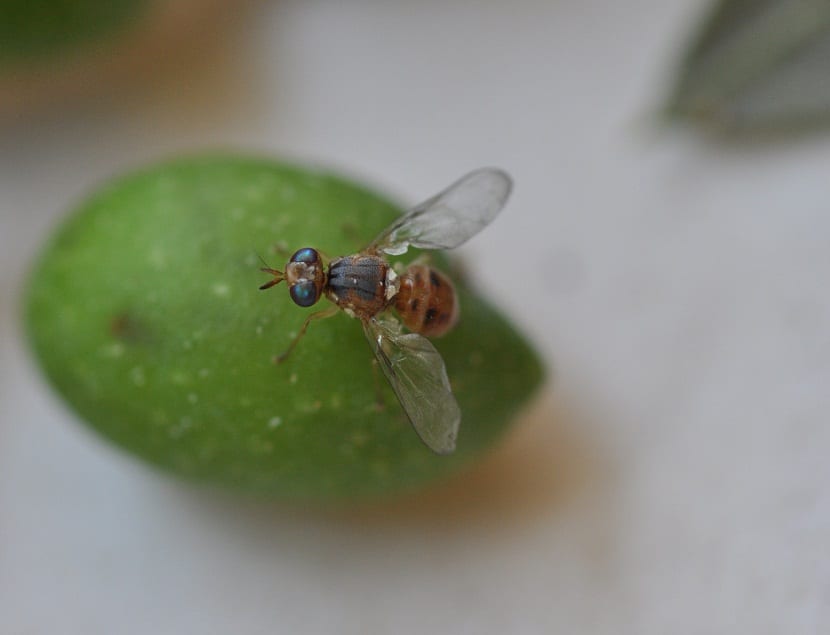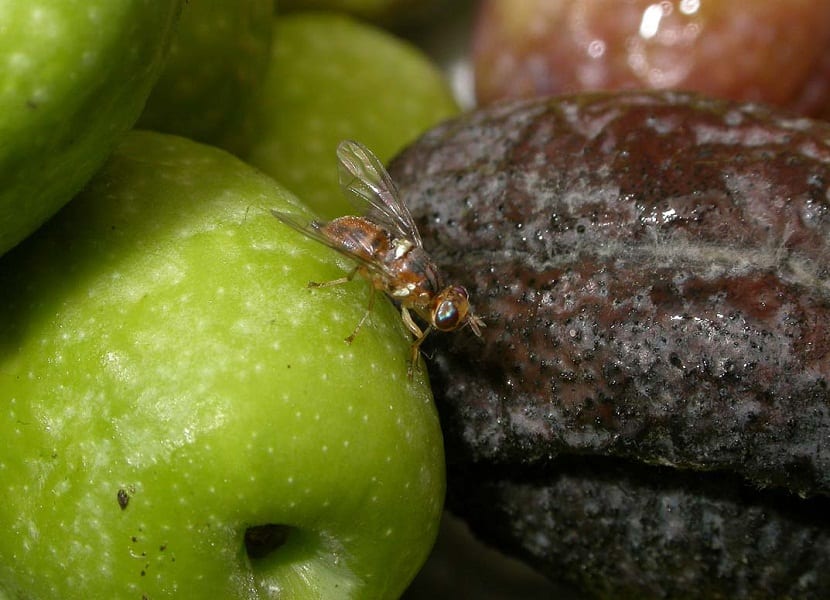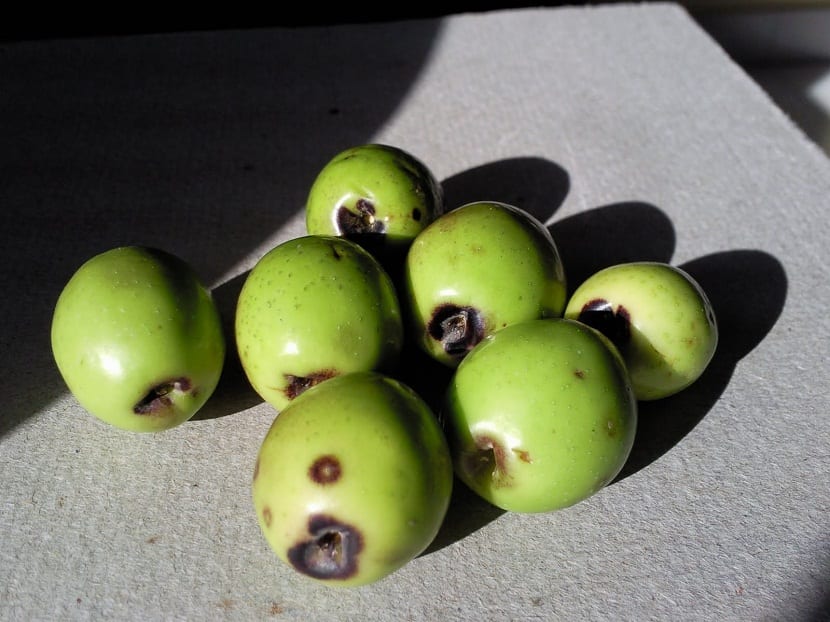
Now olive fly in the same way we can know it with the scientific name of Bactrocea oloeae, this type of insect being a species that belongs to the Tephritidae family.
In the same way we can highlight that this is a fly known by the name that we have already mentioned because when it is in its larval stage, it usually usually uses the pulp of the fruit as a food sourceThe cause of this fact being that it was given the name of the olive fly, so this is a species that meets the characteristics of flies that feed on fruits.
Olive fly characteristic

To begin, we will start from the main characteristics of the morphology of the olive fly, being important to point out that related to what are the eggs that belong to this species, we know that they can have a measurement that is between 0,7 millimeters and 1,2 millimeters, at the same time it has a figure that is elongated and that also has a base that is flat, in the same way, this is an egg that has the opportunity to have what is a kind of tuber, which has the function of the fulfillment of the process of respiration of the embryo.
Once the egg has passed from this stage to the larval stage, the characteristics it has is related to the appearance it has, since in general has a conical shape and at the same time similar to a cylinderIn the same way, we can highlight that once the aforementioned larva is in a certain state of maturity, it can reach a measure that can be found between 6 and 7 millimeters.
On the other hand and if we talk about the color that this larva has, this has a tone that is between white and yellow.
When this species has finished going through each of the phases that have to do with the development of its morphology and it is already in what is the state of a fly in its adult stage, has certain measurements that are between 4 to 5 millimeters.
Generally, in order to highlight what this species looks like, we must take into account that this one has a black color in what is the apex of the wings and it remains extended until it reaches the anal cell.
On the other hand and taking into account the fly highlighting characteristics of the olive tree in its adult stage, we can say that it has a certain color in shades of brown and at the same time reddish and with respect to the area of the thorax that the olive fly has, it has a certain yellow color.
On the other hand with respect to the case of the wings, we can observe them that they are transparent.
With regard to what is the biological cycle of this species, we know that has the ability to vary depending on the season of the year, since at the time that the climate is hotter in what are the months that correspond to the spring and summer season, it has a period or also life phases that are completely different from those that happen when the fly del olivo has the opportunity to live in what are the months with the coldest temperatures of the year, these being the autumn and winter seasons.
Damages and symptoms it causes

The damage that the olive fly usually produces is only on the fruit, more specific that is to say that occurs when they are in their larval stage and they can be of two different classes:
Direct damage
The deterioration of the pulp has been produced through the galleries that causes the fruit to be completely useless as table olives, apart from the fact that the fruits fall before they can be harvested and it has a fairly considerable reduced weight.
Indirect damages
These represent a source of infection for bacteria and fungi to penetrate, modifying what are the organoleptic and acidity characteristics causing in the olives that are used for the production of the oil, being that this is of a poor quality.
Treatments

For the treatment against the olive fly, either to control or prevent, it is very important to keep in mind the olive fly population levels, in order to achieve the optimum moment of application, reduce the impact on the environment and at the same time achieve the maximum possible effectiveness.
In this way we can perform different control methods such as:
Placing traps in bulk
The first thing to be able to carry out a pest control is to have the necessary knowledge about the population level as we have already mentioned and for this we can use cheat abuse, something that is done using a series of attractive products to reduce the number of flies when they are in their adult phase and at the same time we can quantify the population. We can perform this task with fly scarers or also with monochromatic traps, which are gummed on both sides covered with pheromones, reducing the population of males and therefore reducing reproduction.
Biologic control
Taking into account the studies that have been carried out, natural enemies do not play a relevant role with respect to the control of the olive fly, simply decreases the development of the pest through the presence of Opius Concolor in the field, which is a parasitoid insect that feeds on the olive fly, thus reducing its population growth.
Chemical control
Taking into account what the percentage of chopped olives is, we can carry out two completely different kinds of treatment:
Bait treatment
In general, it is done when the percentage of chopped olives per tree is quite low, something that is between 1 and 2% or when more than five adult flies have been collected for each fly repeller. This it is a solution that is composed of a hydrolyzed protein which acts as a bait that is mixed with an insecticide such as dimethoate and water, since you only have to spray the south face of the olive tree to reduce the population of the adult phase.
Total treatment
This is used when the percentage of chopped olives per tree is between 7 and 8% and it is about wetting the entire surface of the tree in order to eliminate both the adult flies and the larvae.